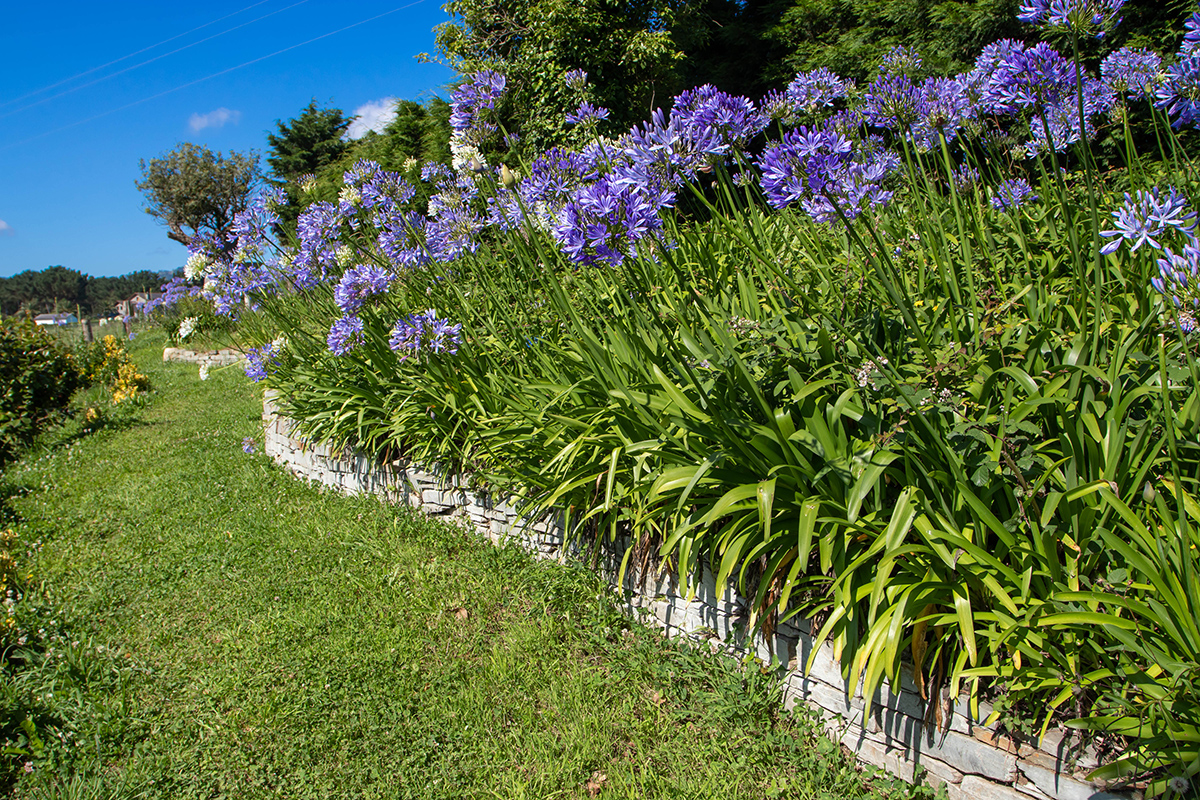Understanding the Art of Agapanthus Care: Vital Actions for Healthy And Balanced Growth and Lively Blossoms
In the realm of horticulture, the farming of agapanthus stands as a rewarding undertaking for those that seek to support these stylish flowering plants. With their striking blooms and elegant vegetation, agapanthus has caught the focus of gardeners worldwide. Nonetheless, achieving optimum growth and vibrant blooms needs a nuanced technique that includes numerous vital actions. From choosing the ideal variety to mastering trimming methods, the journey towards growing prospering agapanthus plants is diverse and holds the key to unlocking the complete possibility of these agricultural gems.

Picking the Right Agapanthus Selection

When selecting the best Agapanthus variety for your yard, take into consideration factors such as climate suitability, bloom color, and development habit. In addition, think about the environment in your area to make sure the Agapanthus variety you select can thrive in your certain conditions. Recognizing the growth behavior of various Agapanthus ranges is essential for proper positioning within your garden.
Ideal Planting Problems
Thinking about the optimum ecological needs is essential for effective Agapanthus farming. Agapanthus plants are delicate to cold temperatures and ought to be secured from frost throughout winter season months.
To make certain healthy development and lively flowers, plant Agapanthus bulbs at a depth of about 2-4 inches and room them 8-12 inches apart. Mulching around the base of the plants assists retain moisture and suppresses weed development.
Watering and Feeding Tips
Maintaining appropriate dampness levels and supplying important nutrients are crucial aspects in the treatment regimen for Agapanthus plants. When it comes to sprinkling Agapanthus, it is important to strike an equilibrium. These plants favor regularly damp dirt however are prone to root rot if overwatered.
Fertilizing Agapanthus is vital for advertising healthy growth and prolific blooms. Apply a balanced fertilizer, such as a 10-10-10 formula, in the early spring as brand-new development emerges. Repeat this application every 6-8 weeks throughout the expanding season. Prevent too much fertilization, as it can result in lush foliage at the expenditure of blossoms. Always adhere to the maker's guidelines for proper dilution news and application techniques. By adhering to these watering and feeding pointers, you can guarantee your Agapanthus plants thrive and produce vivid, long-lasting blooms.
Trimming Methods for Agapanthus
Trimming Agapanthus plants at the proper times and with appropriate methods is crucial for preserving their wellness and advertising ideal development and flowering. The optimal time to prune Agapanthus is in late winter or very early spring prior to new growth emerges.
For flowered stems, wait till the blossoms have actually withered and after that trim them back to the base. This not only tidies up the plant's appearance yet additionally urges the growth of brand-new blossom buds. Deadheading spent flowers can also redirect the plant's energy into generating more flowers instead of establishing seeds. Nonetheless, if you intend to collect seeds for breeding, leave some flowers to fully grown and dry on the plant.
Keep in mind to utilize tidy, sharp tools to make precise cuts and reduce the threat of introducing diseases. Agapanthus. Routine pruning will certainly aid maintain your Agapanthus looking healthy and balanced and neat while making certain an abundant display screen of attractive blossoms
Taking Care Of Usual Insects and Conditions
After ensuring proper pruning methods for Agapanthus, it is necessary to attend to usual bugs and illness that can affect the health and vitality of these plants. One usual pest that affects Agapanthus is the Agapanthus gall midge.
An additional typical concern is visit the site fungal fallen leave area, which presents as dark sores on the fallen leaves. To avoid fungal illness, ensure great air blood circulation around the plants, avoid above watering, and get rid of any infected leaves immediately. In addition, Agapanthus plants can suffer from root rot if they are grown in improperly draining soil. To stop this, plant Agapanthus in well-draining dirt and stay clear of overwatering. By being alert and taking prompt action against illness and insects, you can help your Agapanthus plants flourish and create dynamic blooms.

Verdict
Finally, grasping the art of agapanthus treatment involves choosing the ideal selection, supplying ideal planting problems, see this page appropriate watering and fertilizing, proper pruning methods, and dealing with common insects and illness. By adhering to these important steps, you can ensure healthy growth and lively blooms for your agapanthus plants. Bear in mind to regularly check and maintain your plants to advertise their overall health and long life.
To make certain healthy and balanced development and vivid flowers, plant Agapanthus bulbs at a depth of about 2-4 inches and room them 8-12 inches apart. By complying with these watering and feeding pointers, you can ensure your Agapanthus plants flourish and generate dynamic, lasting blooms.
One typical parasite that affects Agapanthus is the Agapanthus gall midge. Additionally, Agapanthus plants can endure from root rot if they are grown in improperly draining soil. By complying with these essential steps, you can make certain healthy growth and lively blossoms for your agapanthus plants.
Comments on “Growing Agapanthus: A Full Overview to Beautiful Blooms”